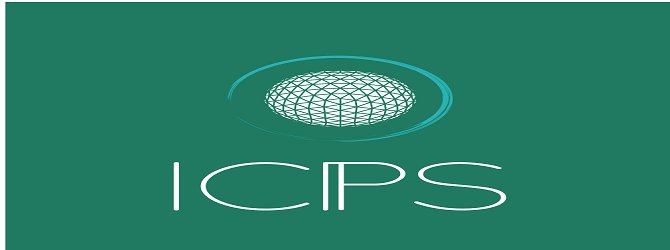Short Article, Clin Dermatol Res J Vol: 6 Issue: 2
The use of N acetylcysteine in Skin Picking Disorder
Katie Grounds1*, Krishnan Bhagawandas2
1Department of dermatology, Neath Port Talbot Hospital, United Kingdom
2Department of dermatology, Neath Port Talbot Hospital, United Kingdom
- *Corresponding Author:
- Katie Grounds
Department of Dermatology
University Hospital of Wales
United Kingdom
Mobile: + 447401147858
E-mail: kates1@doctors.org.uk
Received: March 18, 2021 Accepted: March 31, 2021 Published: April 07, 2021
Citation: Grounds K, Bhagawandas K (2021) The use of N acetylcysteine in Skin Picking Disorder. Clin Dermatol Res J 6:2.
Abstract
Skin picking disorder (SPD) is an under recognised devastating condition where individuals repeatedly pick on their skin leading to noticeable tissue destruction . Pathologic skin picking includes repetitive, impulsive picking of otherwise normal tissue leading to skin damage, psychological distress and impaired functioning. It remains a poorly understood condition where there is lacking of an effective pharmacological and psychological treatment. This brief case supports the use of N -acetylcysteine as a successful treatment option for SPD. From published studies, N Acetylcysteine (NAC) appears to be a safe medication which is widely accessible, and so we look forward to further clinical trials on its use in compulsive psych dermatology manifestations.
Keywords: N Acetylcysteine; Skin Picking Disorder; Dermatology
Keywords
N Acetylcysteine; Skin Picking Disorder; Dermatology
Introduction
Skin picking disorder also known as excoriation disorder is characterized by recurrent picking of skin, leading to skin lesions and significant psychological distress. Treatment of psych dermatological conditions, particularly body focused repetitive behaviours such as skin picking disorder, often are unsatisfactory various pharmacological and non-pharmacological treatments have been used to attempt to alleviate the symptoms of this condition. This case supports the use of NAC as an effective treatment for this condition.
A 23-year-old female was referred to the Dermatology department from her general practitioner with a four-week history of painful lesions isolated to her abdomen. She recalled no obvious trigger for the cutaneous manifestation but did admit to persistent pulling and picking of the lesions. She was well and had no significant background history. She took the oral contraceptive pill and had no allergies. The lesions were described as painful with a burning sensation. She had received two courses of oral antibiotics in primary care with no improvement.
Clinically there appeared to be several elliptical erythematous lesions as well as shallow erosions to the abdomen in a fairly bizarre pattern (Figure 1). Dermoscopically there appeared to be no sinister features. Clinically the lesions were in keeping with skin picking disorder. Subsequently the patient was commenced on N-acetylcysteine 600mg twice daily for 1 month and then tapered to once daily for 4 weeks and then advised to discontinue.
Further review in clinic at 1 month demonstrated no active lesions and that in fact the skin had restored (Figure 2). However brief cessation of the NAC did worsen her symptoms, with remission again following recommencement of NAC, suggesting a direct association between the two. She remains to take 600mg of NAC once daily.
Patient reported no adverse effects from N-acetylcysteine.
Excoriation or skin picking disease is a disabling, unrecognizable condition where individuals repeatedly pick at their skin, leading to noticeable skin damage. To date there has been no clear effective pharmacological or psychological treatment despite it being fairly common.
N-acetylcysteine derives from the amino acid L-cysteine. It is an antioxidant and cysteine prodrug, where it increases extracellular glutamate in the nucleus accumbens and so reduces the synaptic release of glutamate. Glutamergetic dysfunction has been demonstrated in the pathophysiology of compulsive or habitual disorders. Therefore, restoring extracellular glutamate production in the nucleus accumbens can block the reinstitution of compulsive disorders such as skin picking and also other conditions such as nail biting and trichollomania [1].
Conclusion
This brief case demonstrates the effectiveness and the well tolerability of N-acytylcysteine in acute skin picking disorder, and that it should be considered as budding future treatment option. It also highlights that discontinuation of this NAC treatment led to worsening of symptoms suggesting a direct link between NAC and skin picking disorder. From current published studies, NAC appears to be a relatively safe medication and is widely accessible.
We look forward to further clinica trials on the use of NAC in psychocutaenous disorders especially skin picking disorder [2].
References
- Grant JE, Chamberlain SR, Redden SA, Leppink EW, Odlaug BL et al. (2016) N-Acetylcysteine in the Treatment of Excoriation Disorder: A Randomised Clinical Trial. JAMA Psychiatry 73: 490-496.
- Chinazo O, Nwankwo M (2019) N-acetylcysteine in psych dermatological disorders. Dermatologic therapy 32: 5-20
 Spanish
Spanish  Chinese
Chinese  Russian
Russian  German
German  French
French  Japanese
Japanese  Portuguese
Portuguese  Hindi
Hindi 



